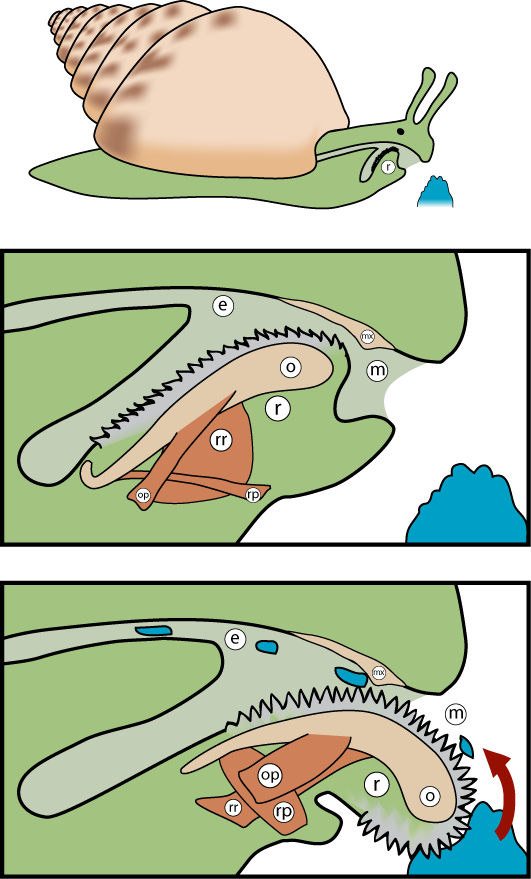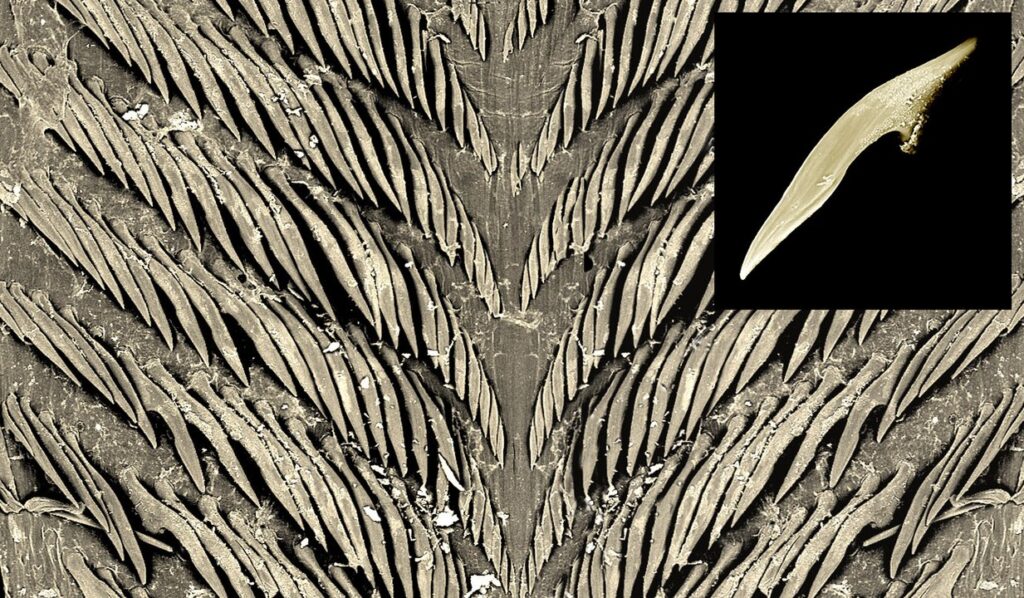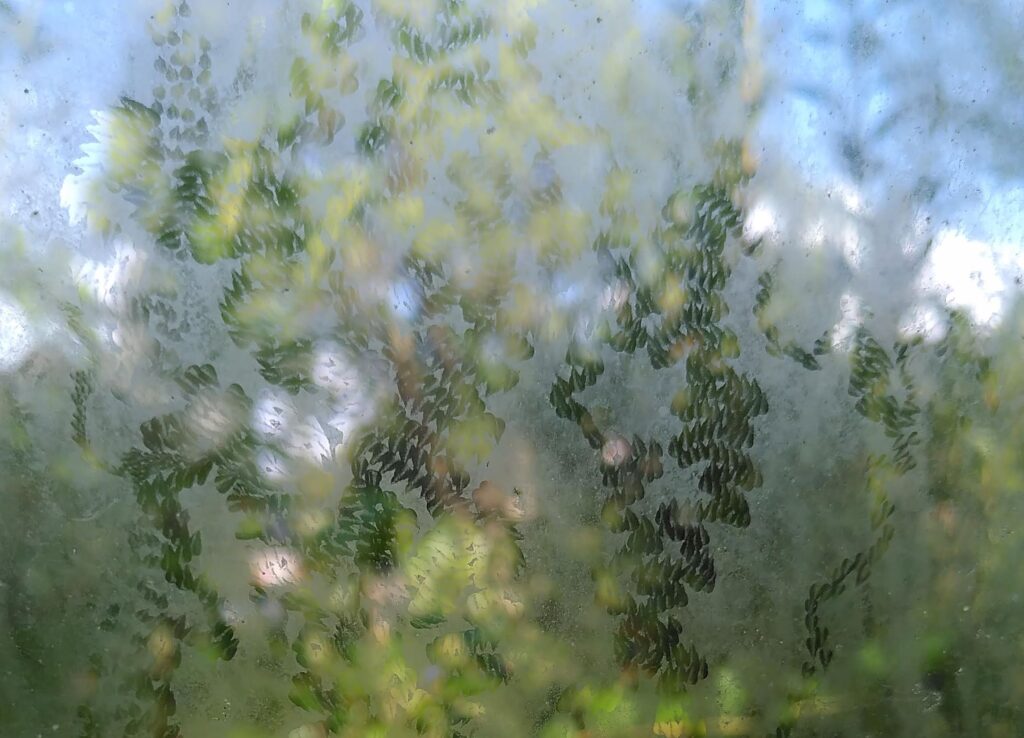Teeth of a sea slug – walking sea hare (Aplysia juliana)
Snails and slugs can eat practically everything. Some eat fresh plants, to the despair of gardeners, me included. Others eat live animals, such as earthworms or even other snails, animal waste, rotting vegetation or fungi. Some species eat one type of food, others are less picky, but practically all lands snails and slugs use their tiny teeth when feeding.
Snails* don’t chew their food before “swallowing” but scrape it up and rasp it using a structure called radula. It is a somewhat similar to our tongue, but covered with many rows of tiny teeth. The snail sticks its radula out to scrape the food. If the food is in a larger piece, e.g., a leaf, snails can cut it with their jaw (snails only have an upper one) before rasping it.

The number, size, shape and distribution of the teeth on radulae differ between species. Some snails have more than 100 000 teeth. The properties of the teeth depend on the type of food a snail eats. The shape of the teeth can also vary across the radula.


The teeth are made of chitin – the same biopolymer from which the external skeleton of insects is made. They can also be hardened by minerals like iron, silicon, calcium or magnesium. the teeth at the front of radulae are used the most and thus wear out the fastest. But new teeth are constantly growing at the back, to replace the worn ones.
Snails grazing on algae from a hard surface (like glass) leave a characteristic trail:

While on a soft fruit or mushroom, they leave less regular marks:

The text above refers mainly to land gastropods (snails and slugs) as all of them (with one known exception) have radula. But this structure is present in many other molluscs, for example aquatic gastropods and cephalopods like squids and cuttlefish and in reduced form in octopuses.
* For a better flow of the text I only write snails, but I mean snails and slugs unless specified otherwise.
Polską wersję tego wpisu możesz znaleźć tutaj.
Photos (in the order of appearance): RME-OT Caracas- Venezuela; Debivort; Amgueddfa Cymru; Krings et al. 2019; Magdalena Kozielska-Reid (two last photos).


Thank you…